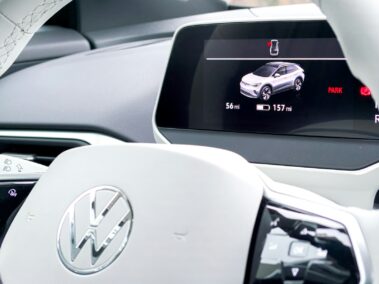The 5G Revolution in Automotive Safety and Efficiency
5G Revolutionizing Autonomous Vehicles in the Automotive Sector
Driving the Future of Autonomous Vehicles: The automotive sector is undergoing a significant transformation, with 5G technology at the forefront of this revolution. 5G’s high-speed, low-latency connectivity is poised to enable the development of smarter, safer, and more efficient autonomous vehicles, ushering in a new era of transportation.
5G: The Backbone of V2X Communication
5G’s exceptional capabilities are the foundation for Vehicle-to-Everything (V2X) communication, a cornerstone of autonomous driving. V2X allows vehicles to communicate with each other (V2V), infrastructure (V2I), pedestrians (V2P), and the network (V2N), enabling real-time data exchange for enhanced safety and traffic management. 5G’s low latency ensures that this communication is virtually instantaneous, allowing autonomous vehicles to react quickly to potential hazards, avoid collisions, and optimize their routes.
Enhanced Safety Through Real-Time Data
One of the most significant advantages of 5G in autonomous vehicles is the enhanced safety it provides. 5G-enabled vehicles can continuously collect and share data with other vehicles and infrastructure, creating a comprehensive picture of the surrounding environment. This real-time data enables autonomous vehicles to make informed decisions, anticipate potential dangers, and proactively avoid accidents. Furthermore, 5G’s high bandwidth allows for the transmission of high-resolution sensor data, such as video and LiDAR, which can further improve the vehicle’s perception and decision-making capabilities.
Smart Traffic Management and Optimized Routes
5G technology also plays a crucial role in smart traffic management. By connecting vehicles to traffic lights, road signs, and other infrastructure, 5G enables real-time traffic monitoring and optimization. Autonomous vehicles can receive information about traffic congestion, accidents, or road closures, allowing them to adjust their routes accordingly, reducing travel time and fuel consumption. Additionally, 5G-enabled V2V communication can facilitate platooning, where vehicles travel in close formation, reducing wind resistance and further improving fuel efficiency.
5G’s Impact on the Future of the Automotive Industry
Accelerating the Adoption of Autonomous Vehicles
5G’s transformative capabilities are set to accelerate the adoption of autonomous vehicles. With enhanced safety, improved traffic management, and optimized routes, 5G-powered autonomous vehicles offer a compelling alternative to traditional transportation. Moreover, 5G’s ability to support over-the-air (OTA) updates allows for continuous improvement of autonomous vehicle software, ensuring that they are always equipped with the latest safety features and functionality.
New Business Models and Services
5G is not only revolutionizing the technology behind autonomous vehicles but also creating new business models and services. The rise of autonomous vehicles opens up opportunities for ride-sharing services, autonomous delivery, and even mobile offices. With 5G’s high-speed connectivity, passengers can work, entertain themselves, or even attend virtual meetings while being transported in an autonomous vehicle. This shift towards autonomous transportation is poised to reshape urban mobility and create new economic opportunities.
5G as a Catalyst for Innovation in the Automotive Sector
The integration of 5G into the automotive sector is fostering a wave of innovation. Companies are investing in research and development to leverage 5G’s capabilities for advancements in autonomous driving, vehicle connectivity, and smart infrastructure. This innovation is not only driving the development of cutting-edge technologies but also creating new jobs and boosting economic growth. As 5G networks continue to expand, we can expect to see even more groundbreaking advancements in the automotive sector, further solidifying 5G’s role as a catalyst for innovation.
The Global Impact of 5G on Autonomous Vehicles
The development of 5G-powered autonomous vehicles is a global phenomenon, with countries around the world investing in this technology. In the Middle East, Saudi Arabia and the UAE are leading the way in embracing autonomous vehicles, with ambitious plans to deploy them in their cities. These countries recognize the potential of autonomous vehicles to improve transportation, reduce traffic congestion, and enhance road safety.
Challenges and Opportunities in the Era of 5G Autonomous Vehicles
While the future of 5G-powered autonomous vehicles is bright, there are also challenges that need to be addressed. Ensuring the security and privacy of the vast amounts of data generated by these vehicles is a top priority. Additionally, establishing regulatory frameworks and industry standards is essential to ensure the safe and responsible deployment of autonomous vehicles. However, these challenges also present opportunities for innovation and collaboration, as stakeholders work together to shape the future of transportation.
Conclusion: A New Era of Transportation with 5G
In conclusion, 5G technology is revolutionizing the automotive sector by enabling the development of smarter, safer, and more efficient autonomous vehicles. With its high-speed, low-latency connectivity, 5G is powering V2X communication, enhancing safety through real-time data, and optimizing traffic management. The adoption of 5G is accelerating the development of autonomous vehicles, creating new business models and services, and fostering innovation in the automotive industry. As 5G networks continue to expand, we can expect to see a profound transformation in the way we travel, with autonomous vehicles playing a central role in the future of transportation.
#5G #autonomousvehicles #automotive #smartvehicles #vehiclesafety #V2Xcommunication























